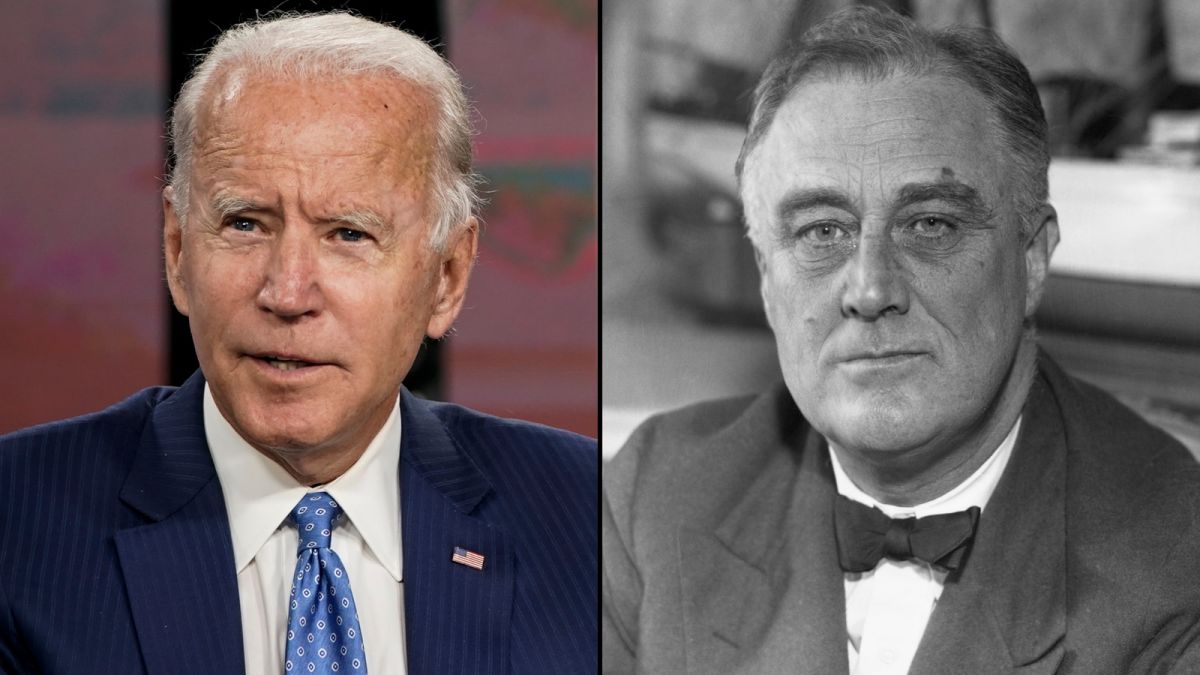(Akiit.com) In early March, President Joe Biden met with a group of seven historians in the East Room of the White House. One topic of conversation: Franklin Delano Roosevelt and the New Deal. “He’d like to be [FDR],” Axios’ Mike Allen reported in an inside account of the meeting. “Biden’s presidency has already been transformative, and he has many more giant plans teed up that could make Biden’s New Deal the biggest change to governance in our lifetimes.”
That’s a bit over the top — we don’t know what is to come, but in its first 70 days Biden’s presidency has not been transformative. But the “Biden’s New Deal” talk is real. Axios reported there was much discussion of “transforming” the country, and much consideration of Biden’s plan “to jam through once-in-a-lifetime historic changes to America.”
Historian Michael Beschloss, who attended the meeting, reportedly said that FDR, along with Lyndon Johnson, are “the past century’s closest analogues” to what Biden hopes to do. “Beschloss said the parallels include the New Deal economic relief that Franklin Roosevelt brought in 1933, which saved the country from the Depression and chaos,” reported Axios.

To put it diplomatically, this is far-fetched. The United States is not in a Great Depression. Yes, there was an economic catastrophe last year. Everyone knows what caused it. GDP plunged, and unemployment soared. Then, quickly, GDP soared and unemployment plunged. The recovery began almost instantly. No, the economy is not yet fully recovered — remember that at this point 12 months ago, the country was still headed into the worst days of the COVID pandemic — but there is simply no comparison between the U.S. economy today and in 1933, when Roosevelt took office.
And for the economic problems that do persist, Congress has passed multi-trillion-dollar recovery bills. There is good reason to think that lawmakers have already spent too much money on recovery. Last month, before Congress passed a $1.9 trillion “COVID relief” recovery program, the Democratic economist Lawrence Summers argued the plan was too big for the problem it purported to fix.
Democrats went ahead and passed it anyway. Biden signed it into law. And now they want to pass $3 trillion, or maybe as much as $4 trillion, more in spending. Why? So that the president can “go big.” So that he can “change the paradigm.” (Biden said that not once, not twice, but three times during his first, and so far only, news conference.)
But what would the new spending do? If the $1.9 trillion “COVID relief” bill spends $150 billion a month to fix a $20-billion-a-month problem, what would a new plan do? “President Biden’s economic advisers are pulling together a sweeping $3 trillion package to boost the economy, reduce carbon emissions and narrow economic inequality, beginning with a giant infrastructure plan,” The New York Times reported recently. In The Washington Post, the headline was, “White House prepares massive infrastructure bill with universal pre-K, free community college, climate measures.”
In other words, everything. What is really going on is that many Democrats are hoping to use Biden’s presidency to “jam” into law a variety of Democratic agenda items old and new. Their vast ambitions are hampered by the fact that they have a very narrow majority in the House — so narrow that Democrats are trying to grab a seat in Iowa that has already been certified by state election officials — and the Senate is tied, 50-50. American voters have not given Democrats the kind of dominant majorities needed to “transform” the country.
In the first six years of FDR’s presidency, Democrats had between 318 and 347 seats in the House. In the Senate, Democrats had between 60 and 79 seats, at a time when there were 96 senators. Neither party has ever again had 300 or more seats in the House, nor has either party ever had 70 or more seats in the Senate.
So Biden does not have the political strength to be Franklin Delano Roosevelt, even if he had FDR’s other qualities. But most important, the country is not in a place that needs an FDR. Perhaps Biden has a hazy, nostalgic view of FDR, who was president when Biden was born in 1942, but he does not have a clear-eyed view of the country’s condition right now.
“Assuming vaccinations allow us to get back to some type of economic normal, the problem is that all of the emergency spending (plus its momentum for future spending) will likely about double U.S. debt relative to GDP,” notes Kevin Hassett, who chaired the Council of Economic Advisers in the Trump White House. “The analogy is to the end of World War II, not the start of the Great Depression. A president who imagines himself launching the New Deal at this point is not FDR, he is Don Quixote.”
Columnist; Byron York
Official website; http://twitter.com/ByronYork









Leave a Reply